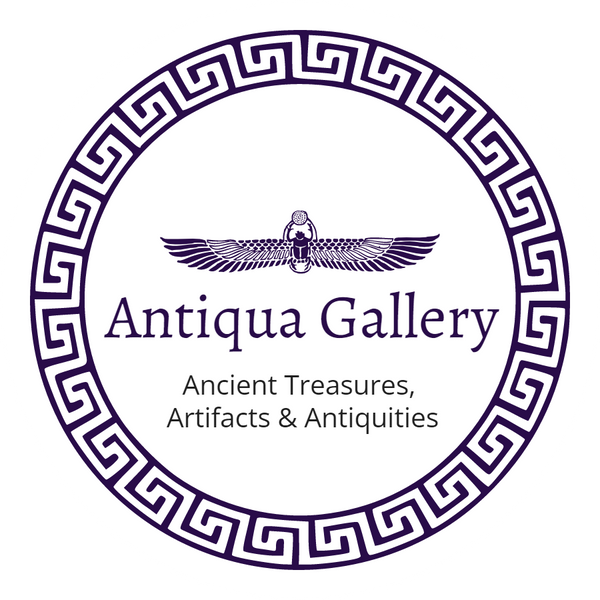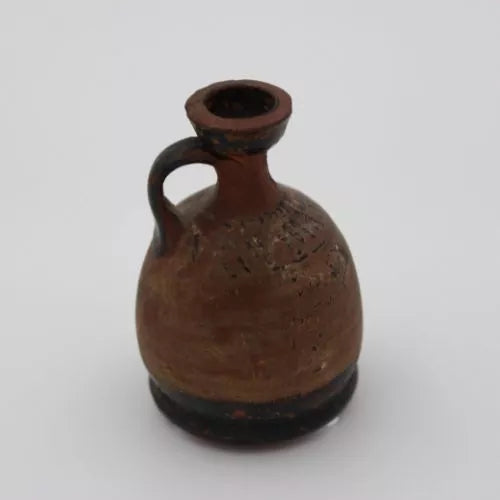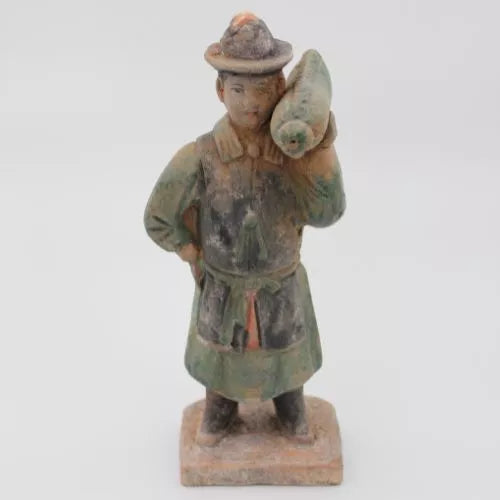Author: Lorenzo (PhD student in History and Archaeology, aswell as M.A. in Archaeology from Roma Tre University, 2016).
The Origins of The Ancient Roman Empire & Culture
By the time of Augustus' death in 14 A.D. the Roman Empire had already reached a major extension, encompassing much of Western Europe, North Africa, Greece and Asia Minor. Only a century later, under the empire of Trajan, did the empire reach its maximum extension, encompassing many of the territories of Armenia, Assyria and Mesopotamia as well as Dacia. Such a large territory, extending to different peoples, led to a constant and continuous circulation of different cultures and religions within its territories.

Picture: Roman Empire in 14 AD. (By Coldeel (talk) 23:02, 26 March 2009 (UTC)), https://commons.wikimedia.org/wiki/File:Roman_Empire_in_14_AD.png.
Latin culture itself was decisively influenced by these cultures: the penetration of eastern religions, particularly the cults of Cybele, Jupiter Dolichenus, Mithra, Isis and Osiris, the Jews and the Christians in the classical world, led to the development of new symbolic forms, both syncretistic (the combination of different beliefs and schools of though) and mystery in their character. All this also had an influence on Roman art and the symbols represented in it.
The Intertwining of the Ancient Roman & Greek Empire
It should be specified, however, that Roman art, like the culture of the Latins themselves, had a privileged relationship with Greek art. Ever since the conquest of the Greek peninsula in the 2nd century BC, numerous Greek men of letters and artists came to Rome and became instructors of the most important Roman citizens. At first there was also a clash between the two cultures: the Roman culture was more pragmatic, while the Greek culture was more philosophical and reflective. The Roman artists borrowed the repertoire of symbolic motifs and images from the Greeks, but enriched it with new meanings, suited to the Roman mentality and the ecumenical nature of the Empire, so that rather than adaptations, we often have complete transformations of the original Greek content. This problem of translation, of partial adaptation and complete imprestito, is gradually complicated by the increasing size of the Empire and its special differentiations according to social classes and regional culture. In truth, the varied situation of local cultures within the provinces, although unified by the political ties of the Empire, produced the either syncretistic or fragmentary motifs typical of provincial styles, with the amalgamation of different styles united with the classical style and creating not a few problems in the subsequent interpretations of the art and symbols represented.
See all ancient greek art for sale here!
Ancient Roman Emperors and Their Symbols of Supreme Power & Victory
One of the main Greek topos adopted by Roman art was the exaltation or delight of triumph, which took place through the depiction of certain symbols within the most important representations: take for instance the celebrated cameo of the Gemma Augustea (Figure 1).

Fig. 1: Gemma Augustea, a depiction of Emperor Augustus surrounded by goddesses and allegories(By Dioscurides (?) - Gryffindor (June 2006), CC BY 2.5, https://commons.wikimedia.org/w/index.php?curid=4407684)
Click here to buy roman antiquities.
Let us focus our attention on the figure seated on the throne: it is Augustus he is depicted with two very important symbols. He is crowned with the so-called civic crown, made of oak leaves, used to praise those who had saved the life of a Roman citizen. This symbol is intended to emphasise Augustus's role as the saviour of Rome and is also often depicted in other circumstances on coins of even lesser rank (Figure 1).
The other ubiquitous symbol in Roman depictions, be they banners, jewellery or coins, is the eagle of Jupiter, a symbol of power and divinity. The figure immediately to the left of Augustus is a woman in arms. Her depiction is very similar to that of Athena, the Greek goddess of war, who in Rome took the name of Minerva: she is actually the personification of Rome. The depiction in armour with spear in hand is intended to show that Rome was always ready to fight a new war. Under her foot is a suit of armour, a symbol of the conquered peoples (Figure 1).
The depiction of Rome is widespread throughout the Roman period, since the Republican era. The motif is depicted on jewellery, cameos, but especially coins. The example of the Augustan gem makes clear to us the mechanism of the symbol in Roman art: an elaborate set of attributive symbols enriched Roman art as a result: a central image was adorned with signs that identified it (e.g. crown, nimbus, sceptre, globe, throne, anchor, canopy, animals, torches, scales, banners, cornucopia, cuirass, mogul, aegis, caduceus, trophy, etc.), but which frequently for the purposes of identification were not used for the purpose of a more precise depiction of the Roman symbol, but which frequently required an explanatory inscription for safe identification.
Several symbolic situations such as adventus, adlocutio, liberalitas, acclamatio, battle and hunting scenes were created as scenes subordinate to a central figure and therefore intended as an attributive description of his powers. For the same political and programmatic reasons, ratios of proportion, posture, gestures, frontality, golden ornaments, exaggerated reduction in height of enemies and barbarians, and many other compositional effects served to symbolise a special capacity of the idealised and venerated figure. A symbol could also replace an event, such as the ornamenta triumphalia, i.e. the emblems of the triumphator used to signify a deserved but not celebrated triumph. They were the decorations, badges, and insignia of a triumphator (triumphant): the golden crown, the toga picta (painted toga), the tunica palmata (tunic decorated with palm leaves, an attribute of Capitoline Jupiter), the scipio eburneus (ivory staff). One must also add the currus triumphalis (triumphal chariot) carved in ivory and the corona laurea (laurel wreath). Not all of these elements, which were used during the ceremony, were always displayed. For instance, on this coin (didrachm) of Claudius, minted between A.D. 43 and 48 for the celebration of his triumph over Britain, he appears on the obverse with the laurel wreath and on the reverse he is depicted on the victor's quadriga, which bears the inscription De Britannis (Figure 2).

Fig. 2: Didracma with the figure of Claudius (by Classical Numismatic Group, Inc. http://www.cngcoins.com, CC BY-SA 2.5, https://commons.wikimedia.org/w/index.php?curid=10392201)
Roman Tombs and Symbols of Death
Roman artists followed this same custom in producing a series of motifs in their sepulchral monuments that transformed the fact of death into themes of triumph, of faith in a saving divinity, of immortality conferred by the Muses, and of the transport of the soul to heaven via the psychopomps (Guide of souls - creatures, spirits, angels, demons or deities in many religions whose responsibility is to escort newly deceased souls from Earth to the afterlife). Although these motifs expressed man's aspirations for the afterlife, neither the symbolic method nor the motifs themselves were restricted to sepulchral (Related to tombs or death) monuments: they were drawn from a repertoire of symbolic themes of general validity, in which the particular meaning was determined by its application. Speculations on immortality, typical in the repertoire of Roman tomb images, were, in Roman art, frequently associated with the symbolic expression of cosmological time in terms of astral and cyclical phenomena. The sarcophagi with the Seasons alluded to this theme in suggesting that the cycle of the Seasons referred to the endless cycle of birth and death, and to the mortal journey from the cradle to the grave. On the sarcophagus of Iguvium, the seasons are depicted through genii harvesting the fruits of the various seasons (Fig. 3).

Fig. 3: Sarcophagus of Iguvium with seasons 250-300 d.C (by: Sailko, CC BY 3.0 <https://creativecommons.org/licenses/by/3.0>, via Wikimedia Commons).
Discover all the interesting roman artifacts and ancient art here.
Another very interesting, yet not very frequent theme is the winged pegasus: the depiction derives from Greece and the Middle East and has the original meaning of freedom, being winged. In Roman art, the symbol is associated with funerary meanings, as it is considered a companion for the souls of the dead. However, the winged horse was also used by some Roman legions, as their own symbol, due to the association of pegasus with the myth of the strong and brave Bellerophon, who defeated the chimera. Another animal frequently depicted is the griffin. Its motif derives immediately from Greek art.

Fig. 4: Detail of the Cameo de France with the representation of Germanicus on pegasus (by Janmad on basis of the picture by Jastrow → Image:Great Cameo of France CdM Paris Bab264 n1.jpg, CC BY-SA 3.0, https://commons.wikimedia.org/w/index.php?curid=5202537)
The gryffin appears as the guardian of the temple and altar of Apollo and also performs this function for the world of the dead, already in archaic times. He is present in Greek, Etruscan and Roman funerary art, represented in paintings, on sarcophagi and urns. Eros united with a griffin seems to be a particularly popular image in Roman imperial art. In classical art, it is also attested as a psychopomp animal: on some monuments and objects of a funerary or decorative nature a griffin appears carrying a human being on its back, sometimes wrapped in a long drape.

Fig. 5: Fragment of fresco with griffin on a cornice, 1st century AD (By Sailko - Opera propria, CC BY 3.0, https://commons.wikimedia.org/w/index.php?curid=65797928)
Symbolism in Ancient Roman Oil Lamps
One of the most decorated objects was the oil lamp, a very important tool for lighting in homes, temples, sanctuaries and burial grounds. Depending on its use, personal taste and the fashion of the period, it could be depicted with various symbols such as: gods, demigods and heroes; objects of worship: thyrsus, caduceus, cornucopia, club, laurel, altars; circus scenes, gladiator fights, fights with ferocious beasts, bullfighting, acrobatics, sleight of hand; cupids fighting as gladiators, playing or doing human work, or pygmies; hunting and fishing scenes; rustic and rural life scenes; scenes of military life; erotic scenes; domestic and wild animals, or buffoons imitating humans; plants: myrtle, ivy, pomegranate, olive, laurel, palm, also with branches and crowns; plants and animals together, a bird pecking a branch, a hare eating fruit; artefacts such as amphorae, oars, weapons; stars, sun crescent; reproduction of famous statues; geometric ornaments, rosettes, circles, waves, with palmettes, flowers etc. While in the fictile (clay) specimens the decoration focused almost exclusively on the disc, in the bronze oil lamps the handle and sometimes the lid are favoured.

Oil-lamps were used to illuminate different rooms in the home, workshops, temples, baths and theatres. Just think of the oil-lamps always found in large quantities in cemeteries, especially in the catacombs. They were in fact often placed in grave goods, as symbols of life and guidance for the deceased in the realm of the dead or offered as a vow to the deities or used as an auspicious gift at the beginning of the New Year or, again, as a tribute between lovers.

Check out the oil lamps I have for sale here.
Symbols from Everyday Life
Alongside all these macro-representations there were also symbols, animals or other images that had a specific message. Some of them were also very curious, such as the famous case of phallic representations, very present on oil lamps, small terracottas and amulets, or traceable even on the perimeter walls of houses, especially in Pompeii and Herculaneum. The phallus has a propitiatory apotropaic value, it is able to ward off evil spirits, able to give protection to the home and workplaces, a force of nature against evil, flagellating demons and fascinum: the negative power of the dry eye. In both the Greek and Roman worlds, phallophoras were celebrated, i.e. processions in honour of Priapus and Dionysus in which participants carried wooden phalluses, sang songs and danced: it was a ritual to propitiate fertility. In its Roman form, Priapus is a synthesis of different deities from different cultures and influences whose roles, images and symbols were adapted to the customs of the period. The apotropaic use of the phallus is also present in ancient Greek and Etruscan culture, but its presence in the Roman world is more pervasive and elaborate: this is probably also due to the fact that during the 1st century A.D. Priapus begins to play different roles - guardian of gardens, protector of sailors, and is associated with the passage from life to death.

Fig. 6: Relief of winged phallus on altar in Via dell'Abbondanza in Pompeii (By Sailko - Opera propria, CC BY 4.0. https://commons.wikimedia.org/wiki/File:Pompei,
_via_dell%27abbondanza,_altarino_con_fallo_eretto_alato.jpg)
Many symbols were then found not only on works of art or everyday objects, but also on the insignia of the legions. Besides the rarer pegasus we have already mentioned, the other main symbols were the eagle and the she-wolf. Each of them had a precise message. The imperial eagle with spread wings and its head turned to the right was the emblem of the Roman Empire while the two-headed eagle, also Roman, expressed the reunion of the two Roman empires of West and East. The she-wolf is one of the most important symbols for Rome, a clear reference to the legend of the city's foundation, since Romulus and Remus were raised for a time by a she-wolf. The famous bronze representation that is still preserved in Rome today is actually from the Middle Ages, but the she-wolf theme was very frequent on both insignia and coins, symbolising the power of the city.
We have seen in this short article a summary of the many uses of the symbol in Roman art. Their multiple meanings due to the blending of various cultures in different parts of the empire has created many problems for contemporary art historians and archaeologists in fully understanding their meaning, yet they are a good example of how extraordinarily vast and culturally alive the Roman imperial world was.
Thankyou very much to Lorenzo (PhD student in History and Archaeology, aswell as M.A. in Archaeology from Roma Tre University, 2016) for writing this very interesting article.
I hope you've enjoyed reading it - I certainly have!
Many kind regards & best wishes,
Theodor Knutzen, Owner of Antiqua Gallery










